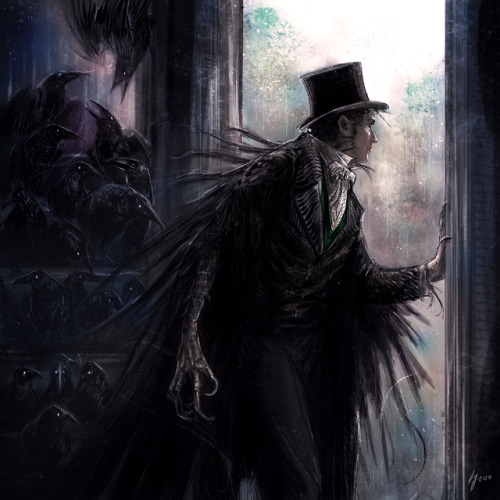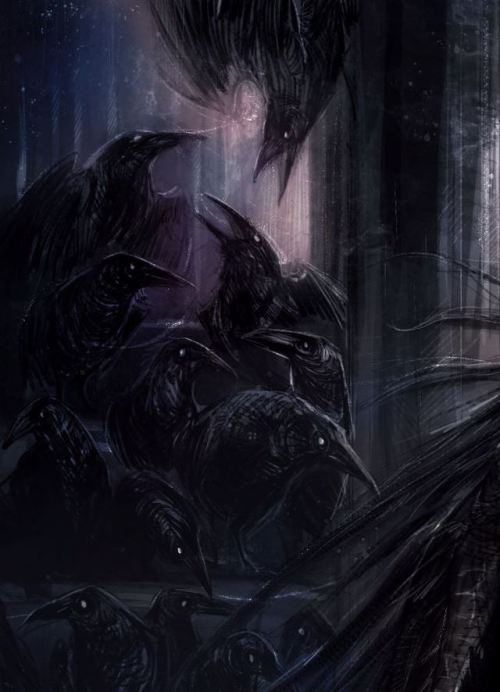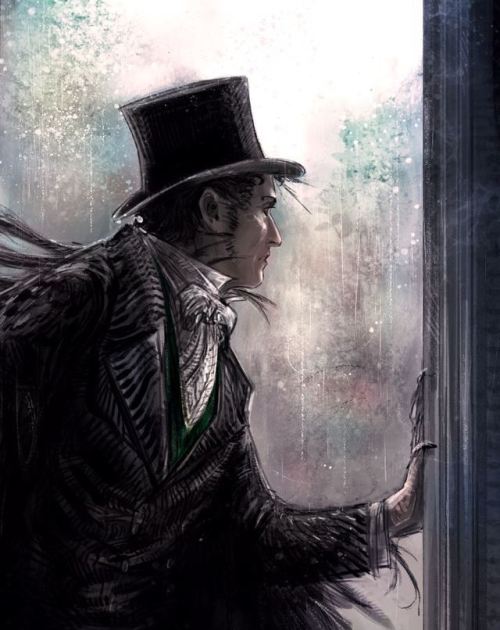Unkindness-of-valravns - The Unkindness Of Valravns



More Posts from Unkindness-of-valravns and Others
Valravnen is less of a vættr and more of a fairytale creature. It's only known from medieval folk songs, and only from Denmark.
Valravnen shows up in two folk songs: The appropriately titled "Valravnen" and a version of "Germand Gladensvend," where Gammen is replaced by Valravnen. In the self-titled song, valravnen is a human who has been cursed to become a raven and is only returned to his human body when he drinks the blood of a baby. In Germand Gladensvend, valravnen is a monstrous bird who helps the main characters, but asks for their first-born in return, whom he then eats - he is, however, killed by the child's mother before it is revealed why he ate the child.
Even in the song commonly known as "Valravnen," this word only shows up in two of the nine versions of the song. In the other versions, the character is referred to as Wild Raven, Salmand Raven, or Verner Raven (Salmand and Verner being human names).
According to folklorists Holbek & Piø, "valravn" (battlefield raven) is not the original name for this figure, but is instead a misunderstanding of the more prevalent name "vilde ravn" (wild raven), as the figure never appears to have had anything to do with the battlefield, and "wild raven" is a far more common moniker in medieval sources.
However, during the early-1800s nationalistic romanticist wave, poet Adam Oehlenschläger showed a clear preference for the name "valravn" and chose to exclusively use that name in his reworkings of the folksongs. By the time folklorist Svend Grundtvig started his work, by the mid-1800s, "valravn" had overtaken the earlier "vilde ravn" name in popularity.
It is Holbek & Piø's opinion that valravnen is closely related to the werewolf, since they're both transformed humans who can be freed by drinking the blood of an infant, a belief that seems exclusive to Southern Scandinavia.
According to some modern authors, valravnen is a raven that haunts the battlefield, but I have not been able to trace back the origins of this belief. It seems fairly recent, and appears to be a result of the creature's name, more than its actual folkloric presence.
The heraldic combination of a wolf and a raven has been referred to as a valravn. This has seemingly nothing to do with the folkloric valravn, just as a heraldic antelope has nothing to do with a real life antelope. It does lend some credence to the idea that the valravn and the werewolf are related, though. The werewolf is also rarely described as "varulv" in folk songs, but is more often described as "vilde ulv" (wild wolf) or "grå ulv" (grey wolf).
Sources:
Holbek & Piø (1967) "Fabeldyr og Sagnfolk"
Poul Lorenzen (1960) "Vilde Fugle i Sagn og Tro"

Getting there! He finally looks like something. Glueing is always the scariest part for me so I’m glad it went okay.
Now onto trimming. I’d started here but it was just to see the eyes for glueing.

“The Nattravn Passeth By” by Richard Svensson depicts an ominous abomination from Swedish folklore.
-
 unkindness-of-valravns reblogged this · 2 years ago
unkindness-of-valravns reblogged this · 2 years ago -
 71h0 liked this · 2 years ago
71h0 liked this · 2 years ago -
 high-end-profiles liked this · 5 years ago
high-end-profiles liked this · 5 years ago -
 greenwingspino liked this · 5 years ago
greenwingspino liked this · 5 years ago -
 nik-barinova liked this · 5 years ago
nik-barinova liked this · 5 years ago -
 two-potatoes-more liked this · 5 years ago
two-potatoes-more liked this · 5 years ago -
 kjothrae liked this · 5 years ago
kjothrae liked this · 5 years ago -
 instructions-not-included liked this · 7 years ago
instructions-not-included liked this · 7 years ago -
 i-sh1p-malec liked this · 7 years ago
i-sh1p-malec liked this · 7 years ago -
 hoxtalishius reblogged this · 7 years ago
hoxtalishius reblogged this · 7 years ago -
 raishyra liked this · 7 years ago
raishyra liked this · 7 years ago -
 frogharpy reblogged this · 7 years ago
frogharpy reblogged this · 7 years ago -
 frogharpy liked this · 7 years ago
frogharpy liked this · 7 years ago -
 beachbummed liked this · 7 years ago
beachbummed liked this · 7 years ago

"The raven flies in the evening. It will have bad luck, for it can not have good." Dedicated to showcasing everything valravn. (Icon/Header by Zel204)
209 posts








